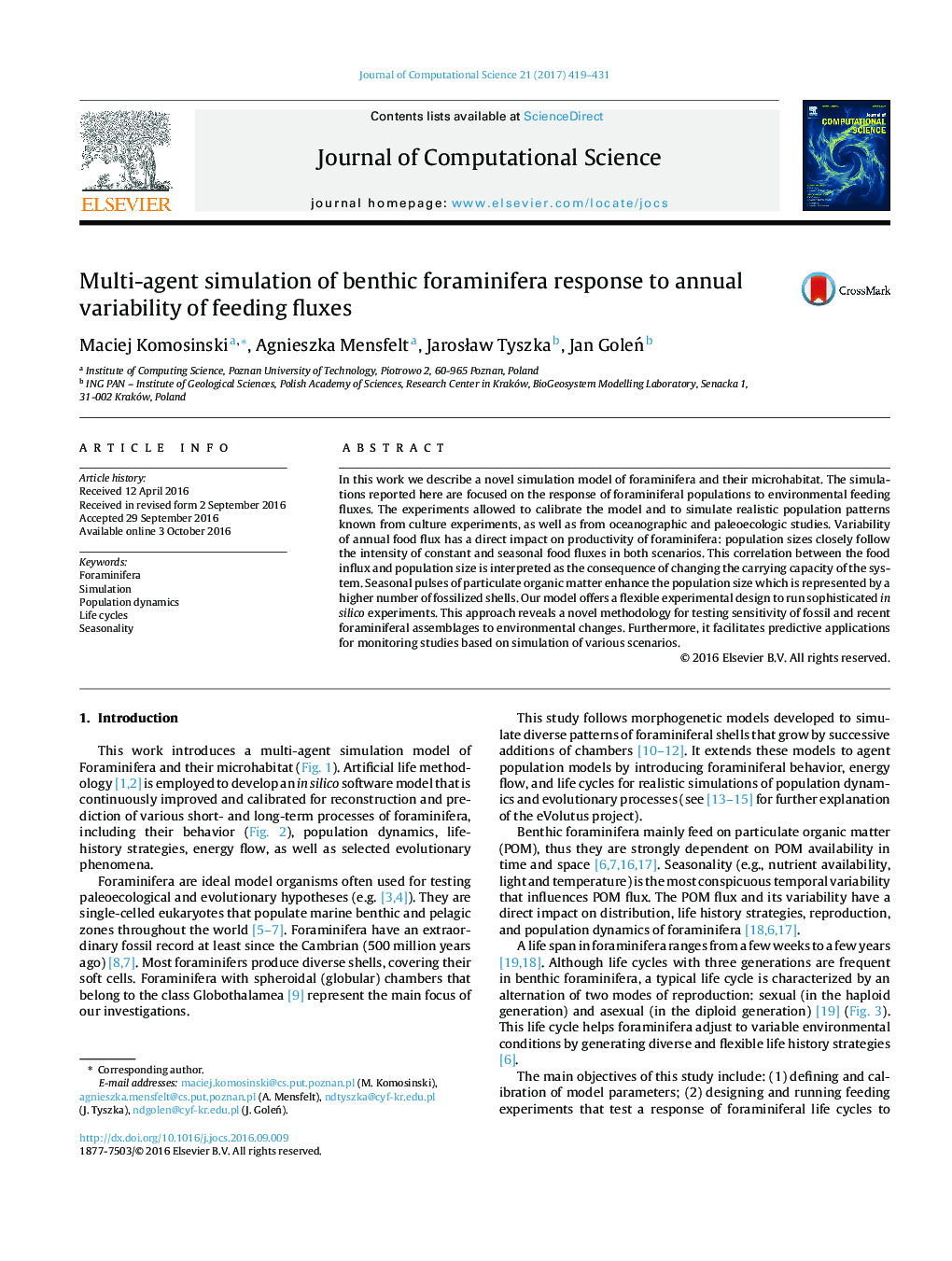| Article ID | Journal | Published Year | Pages | File Type |
|---|---|---|---|---|
| 4951011 | Journal of Computational Science | 2017 | 13 Pages |
â¢A novel simulation model of foraminifera is described.â¢The model focuses on the response of populations to environmental feeding fluxes.â¢Experiments allowed to successfully test and calibrate the model.â¢Results demonstrate realistic patterns known from empirical culture experiments.â¢This approach facilitates predictive applications for monitoring studies.
In this work we describe a novel simulation model of foraminifera and their microhabitat. The simulations reported here are focused on the response of foraminiferal populations to environmental feeding fluxes. The experiments allowed to calibrate the model and to simulate realistic population patterns known from culture experiments, as well as from oceanographic and paleoecologic studies. Variability of annual food flux has a direct impact on productivity of foraminifera: population sizes closely follow the intensity of constant and seasonal food fluxes in both scenarios. This correlation between the food influx and population size is interpreted as the consequence of changing the carrying capacity of the system. Seasonal pulses of particulate organic matter enhance the population size which is represented by a higher number of fossilized shells. Our model offers a flexible experimental design to run sophisticated in silico experiments. This approach reveals a novel methodology for testing sensitivity of fossil and recent foraminiferal assemblages to environmental changes. Furthermore, it facilitates predictive applications for monitoring studies based on simulation of various scenarios.
